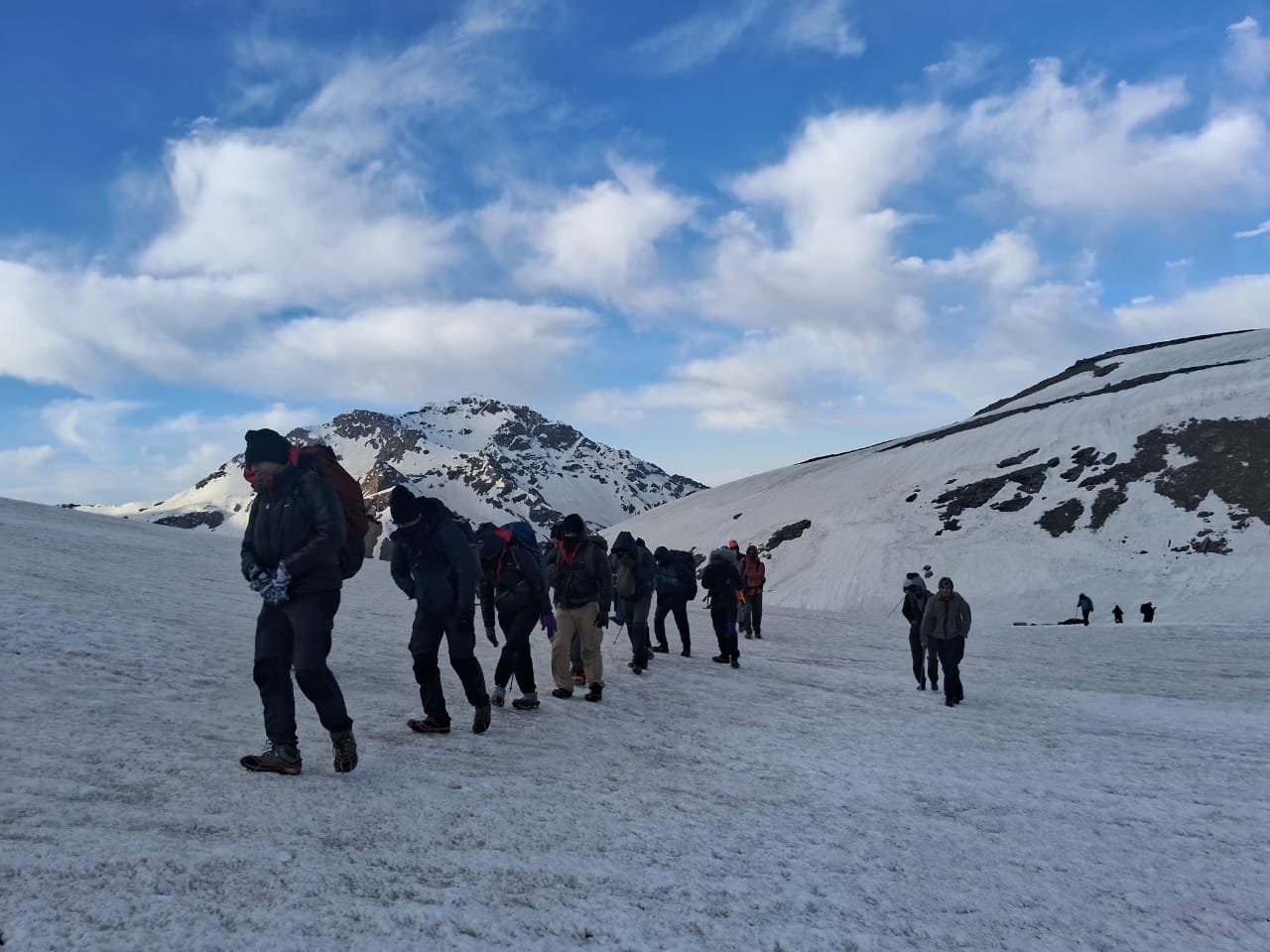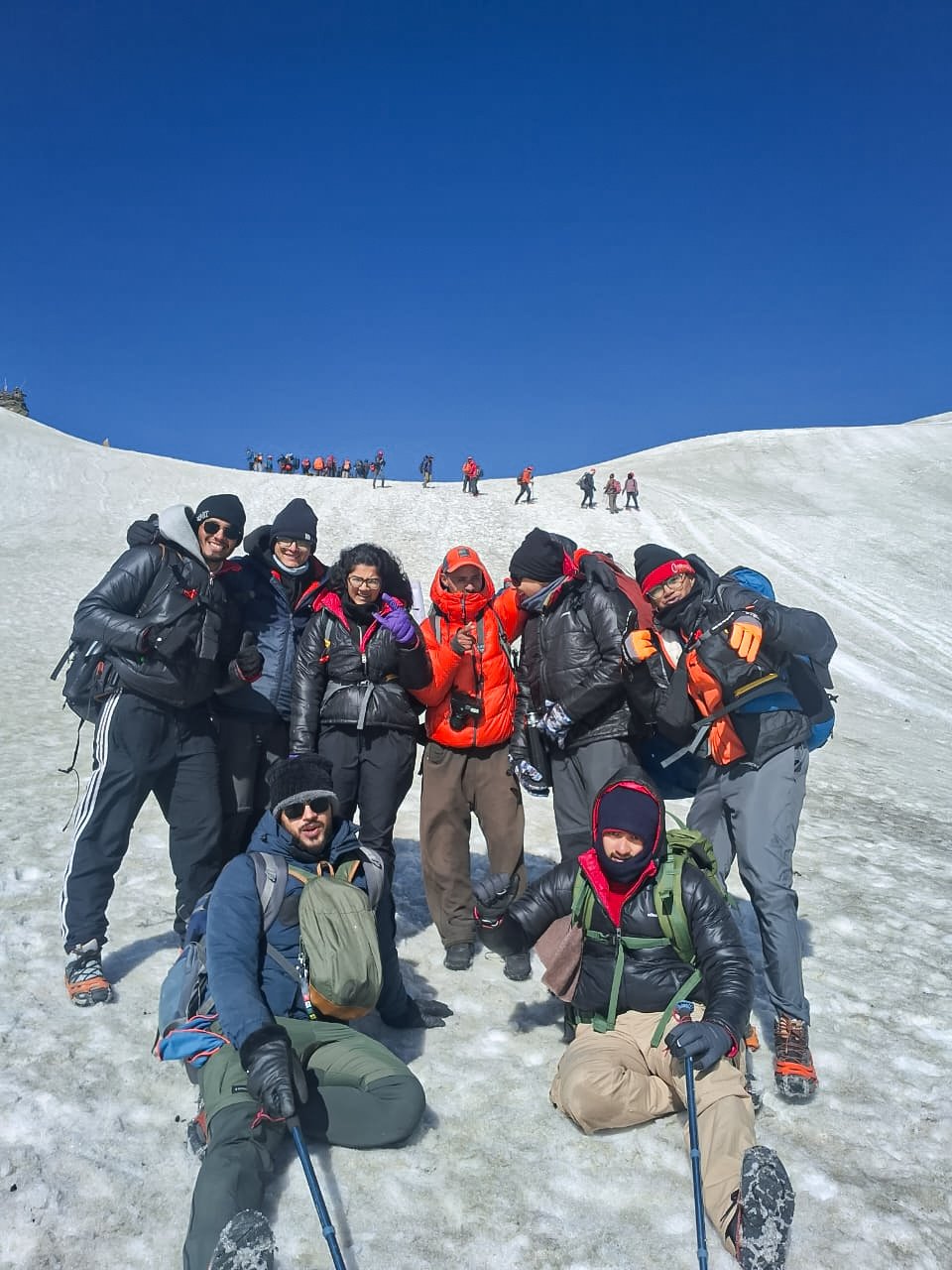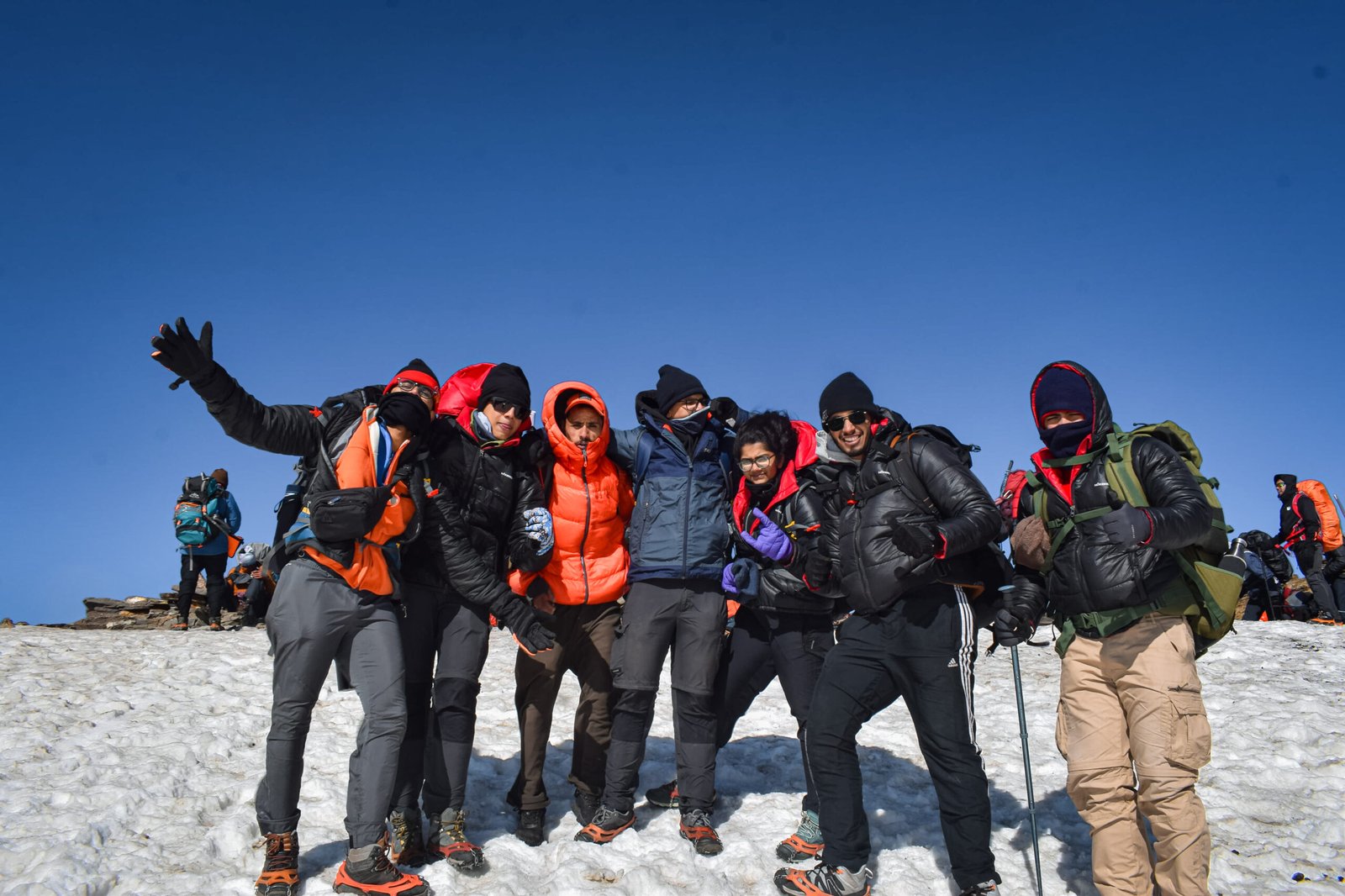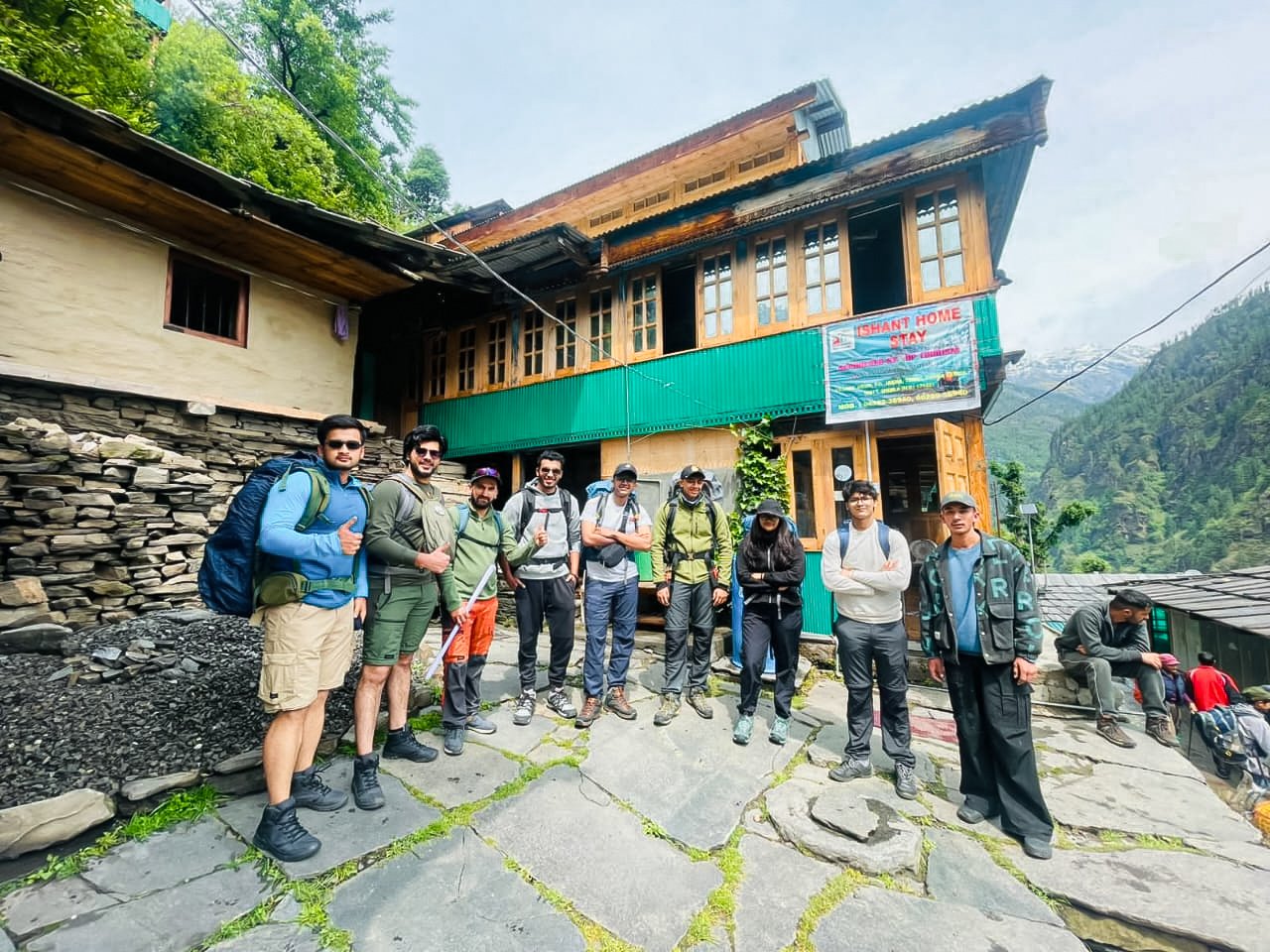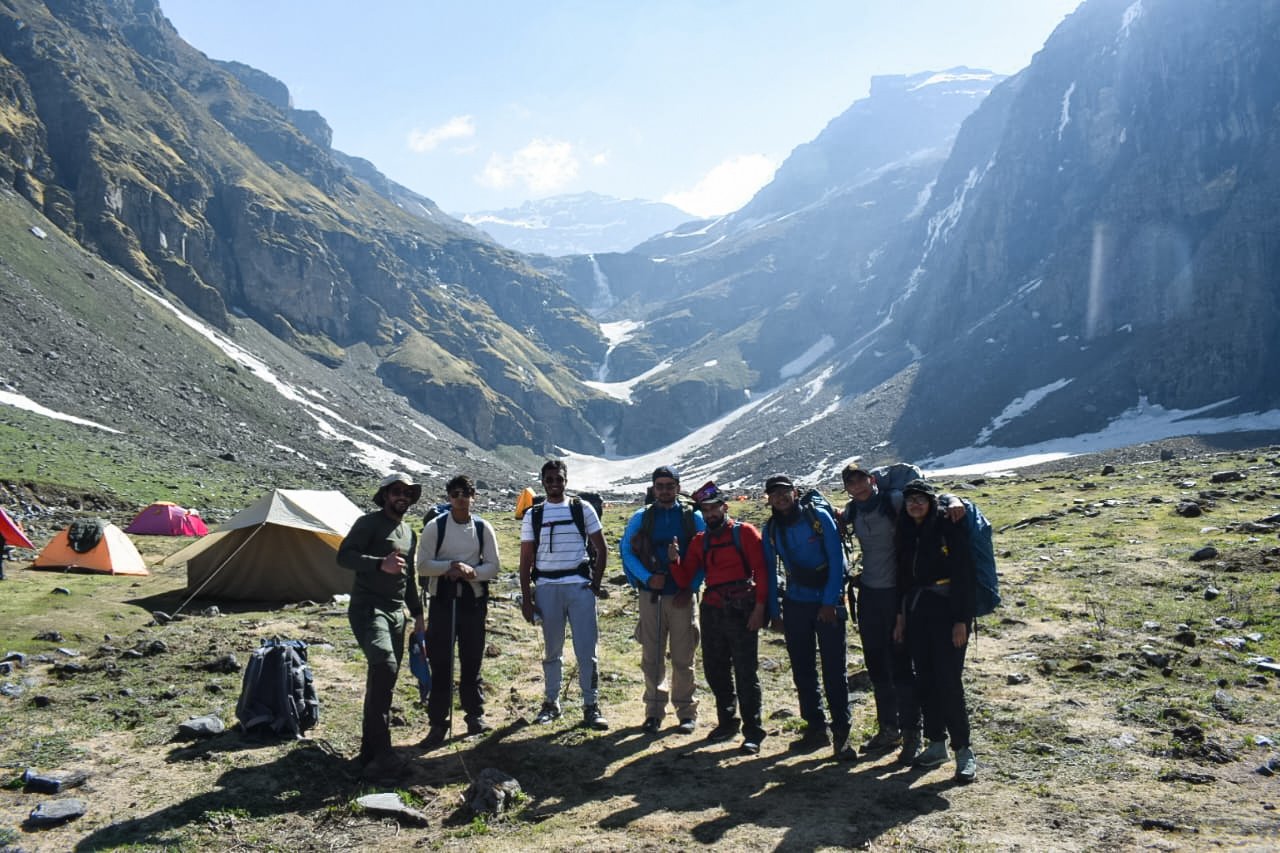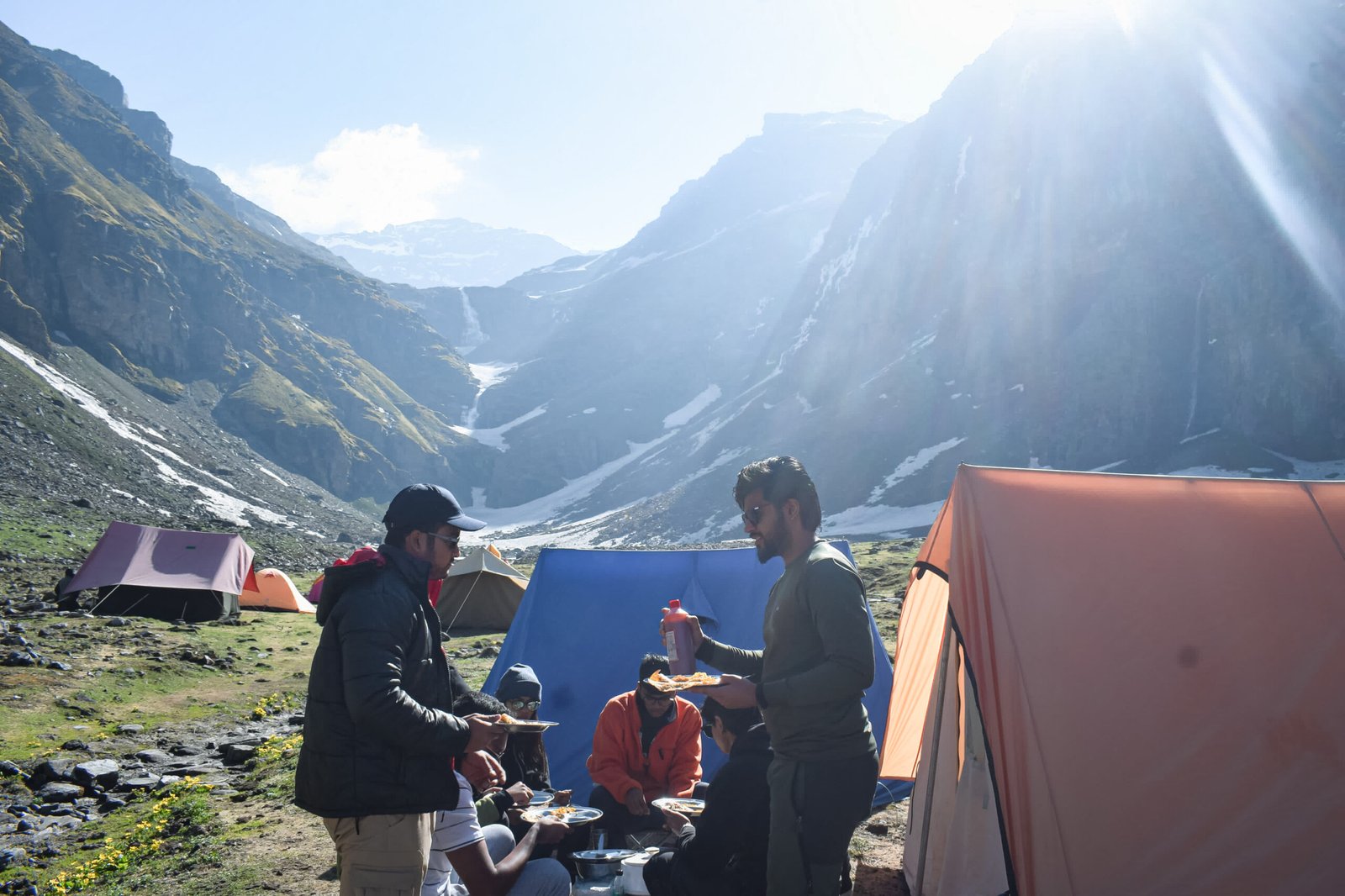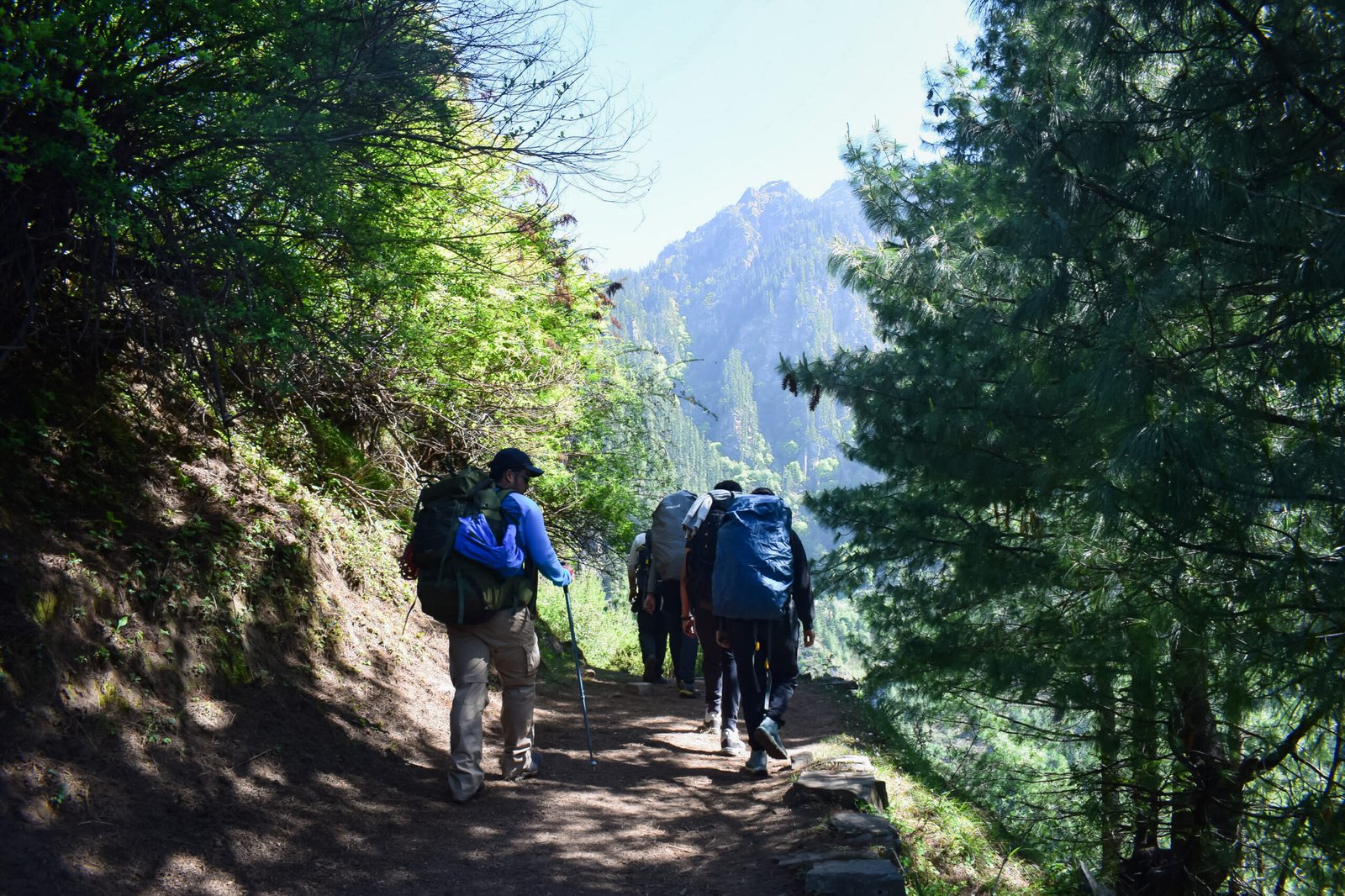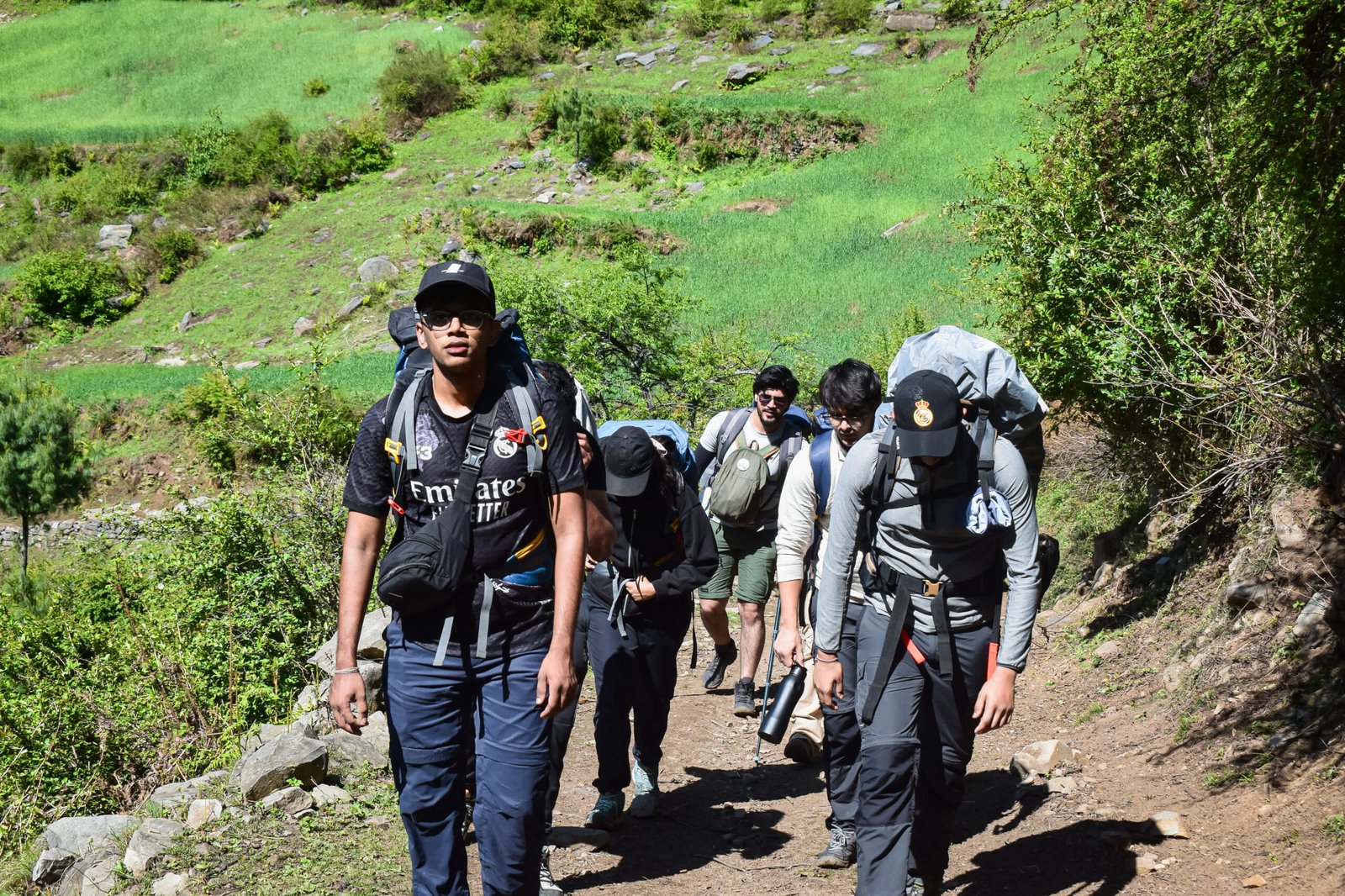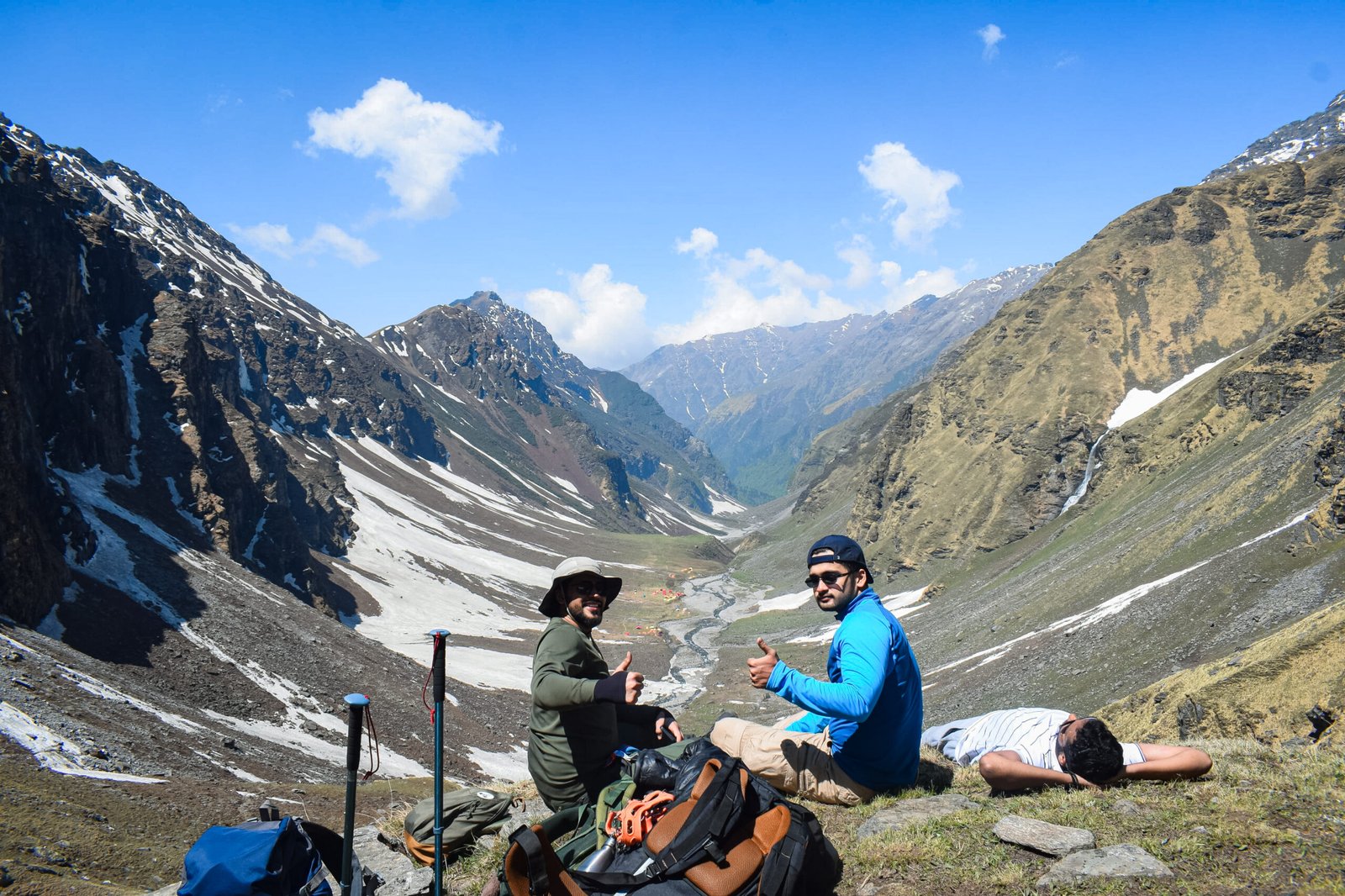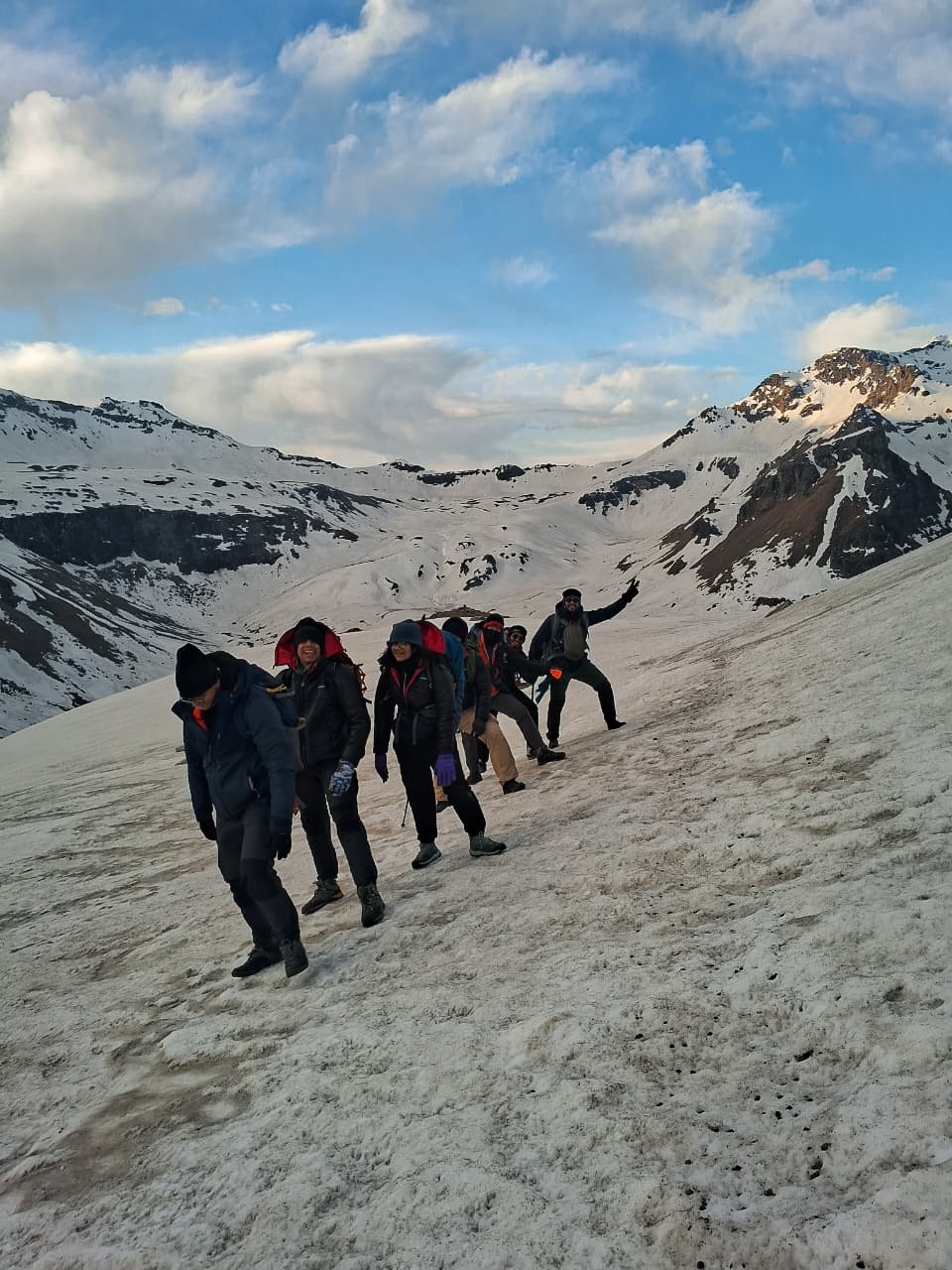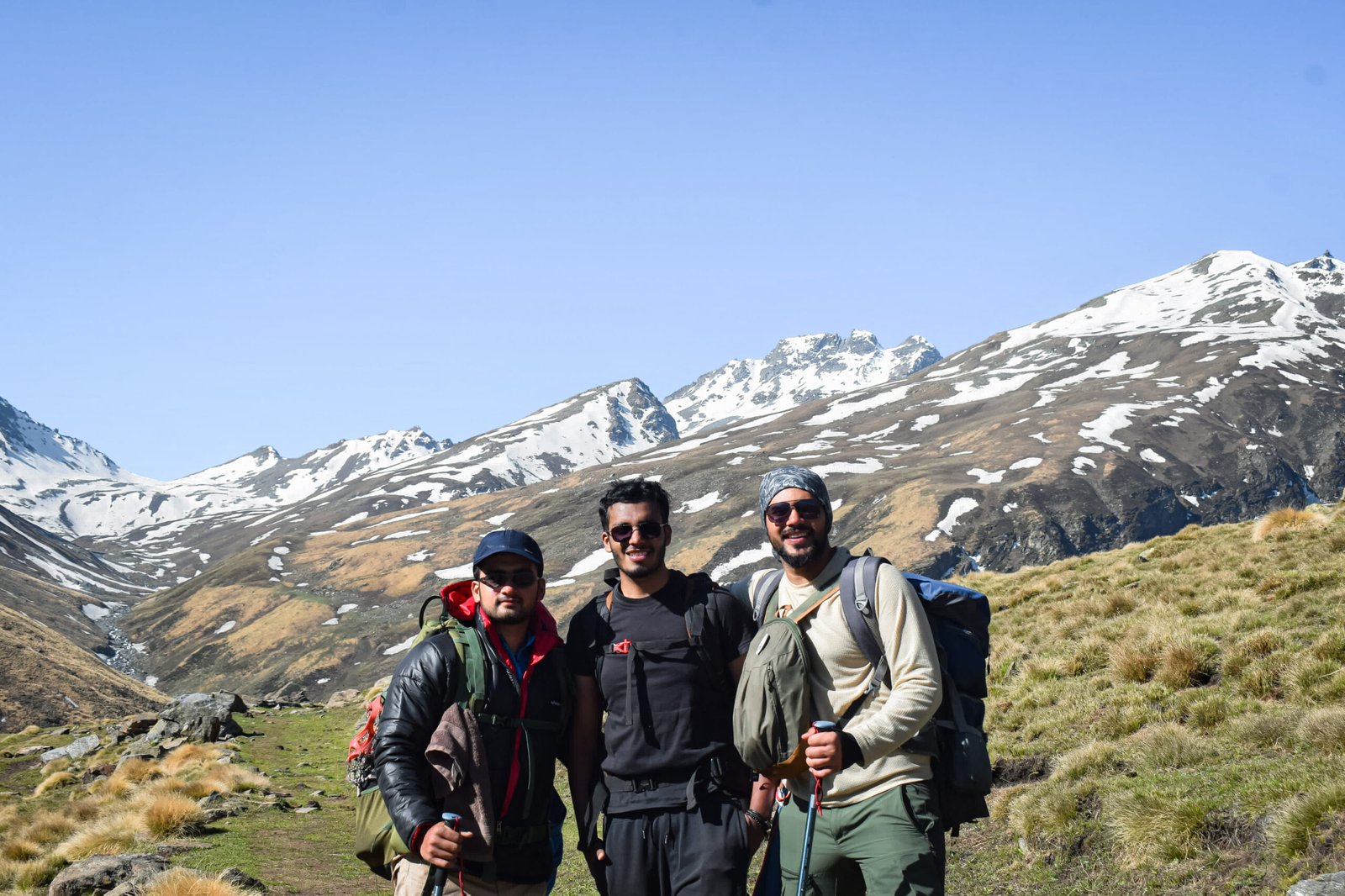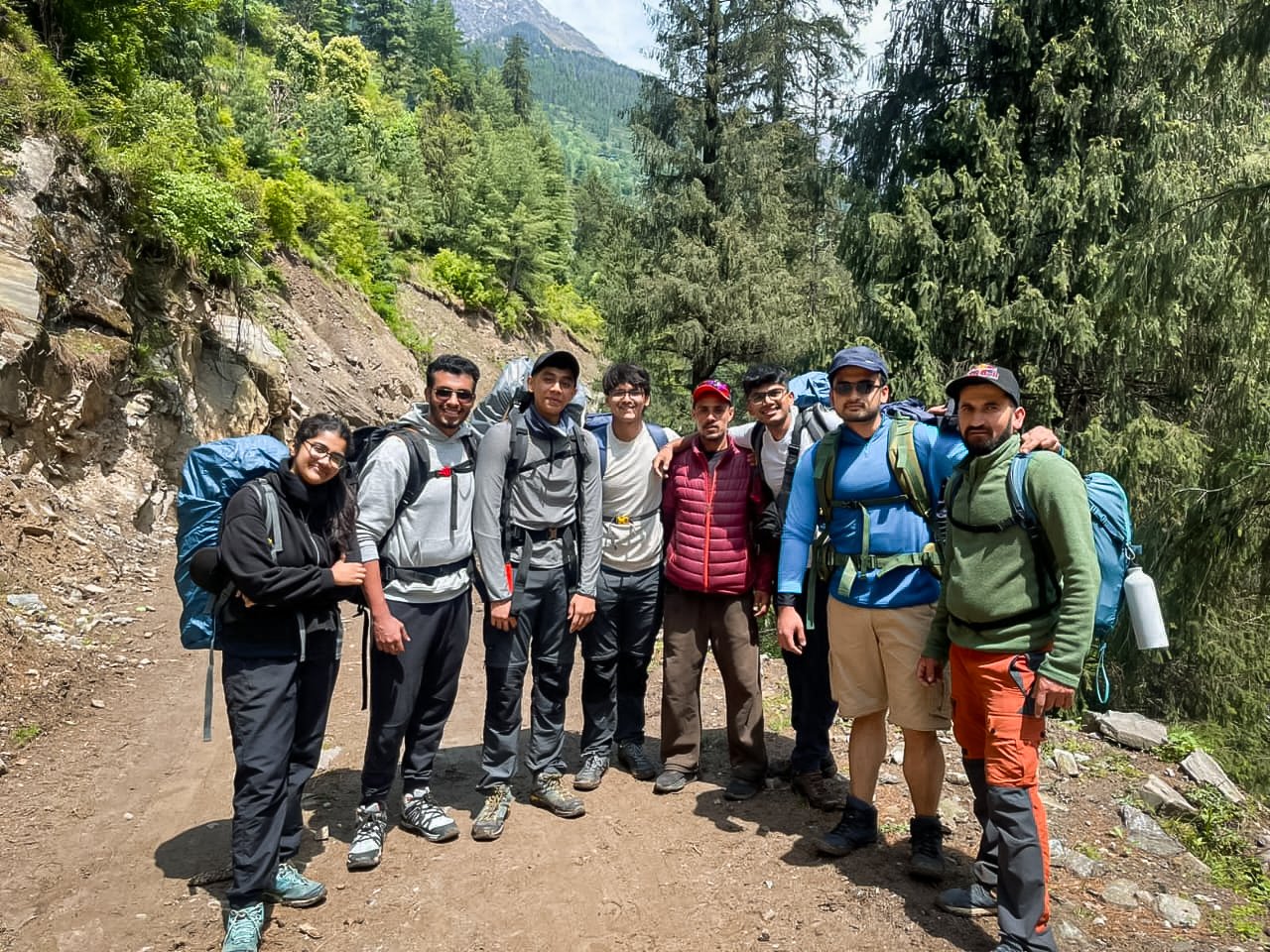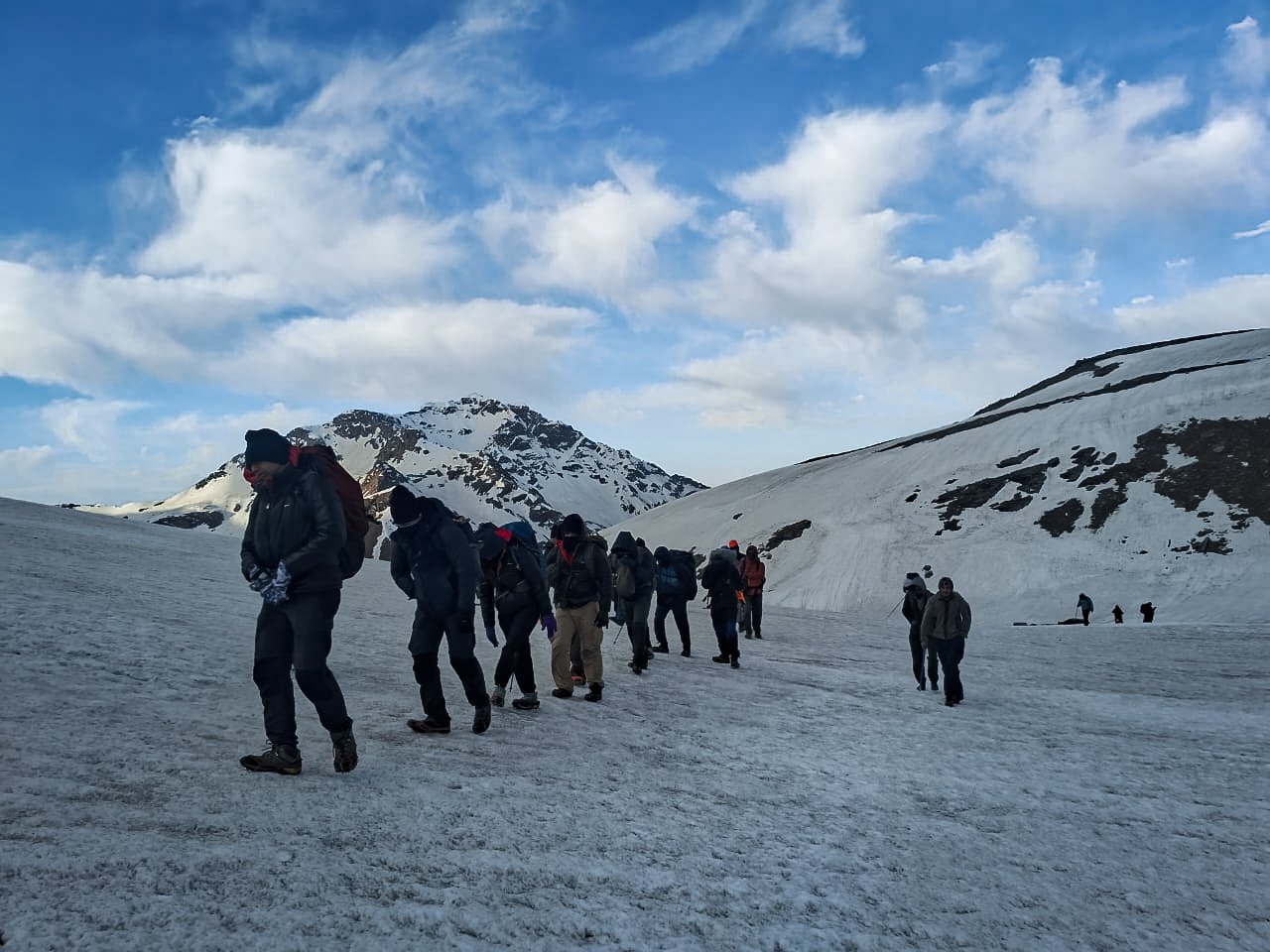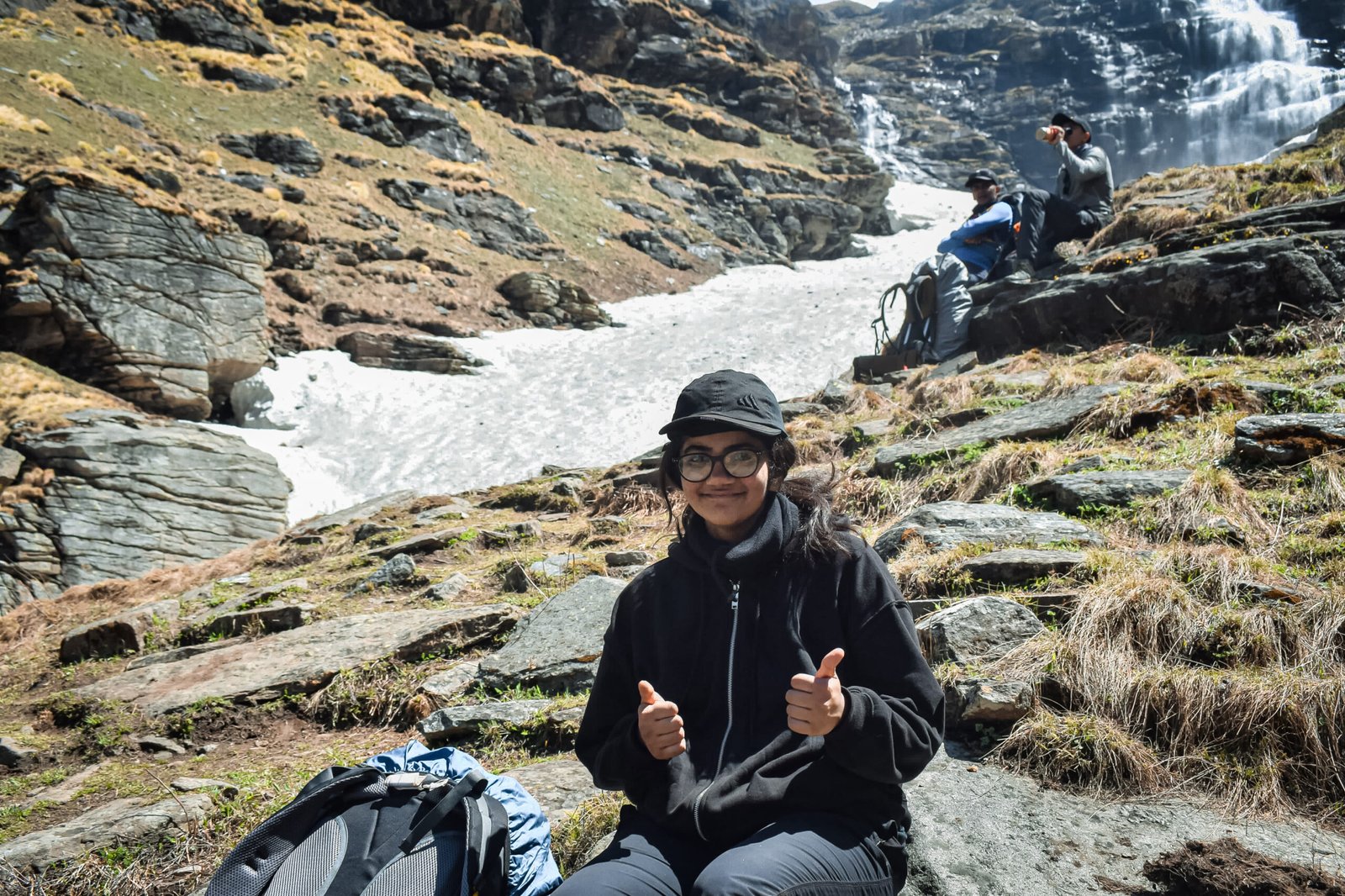RUPIN PASS Trek Information
The Rupin Pass Trek, standing at 15,250 feet (4,650 meters), is one of India’s most stunning high-altitude treks. To start with, it begins from the remote village of Jiskun in Himachal Pradesh and ends in scenic Sangla. Along the route, trekkers witness ever-changing landscapes from dense pine forests and hanging villages to roaring rivers and snow-covered passes. Moreover, this continuous variety keeps the journey exciting and memorable, making it a favorite for adventurers.
As the trek progresses, the trail leads through traditional villages like Jhaka, known for its cliffside location. Subsequently, it opens into beautiful alpine meadows dotted with wildflowers and glacier-fed streams. Then, trekkers reach the spectacular Rupin Waterfall, a powerful three-stage cascade. Finally, a steep climb through snow-filled gullies brings you to Rupin Pass. Although challenging, the summit rewarded with breathtaking views of the Kinnaur and Dhauladhar ranges.
While rated moderate to difficult, Rupin Pass Trek suits well-prepared beginners and experienced trekkers. Spanning 6 to 7 days, the trek balances adventure with peaceful moments. Throughout, campers enjoy starry nights, cross rustic wooden bridges, and soak in nature’s raw beauty. Additionally, the journey teaches resilience and patience. Therefore, those seeking to push their limits while embracing Himalayan grandeur will find this trek unforgettable.
Why Choose the Rupin Pass Trek?
-
Trek through diverse trails from dense pine and oak forests to colorful alpine meadows filled with wildflowers like rhododendrons and primulas.
-
Enjoy breathtaking panoramic views of peaks such as Mt. Kinnaur Kailash, Bandarpunch, and the Dhauladhar range along the route.
-
Cross thrilling wooden bridges over roaring glacier-fed rivers and witness spectacular waterfalls, including the famous Rupin Waterfall.
-
Camp in peaceful, scenic locations with clear Himalayan skies, perfect for unforgettable stargazing experiences.
-
Experience solitude on this less crowded trek, fostering a deep connection with the pristine natural beauty and wilderness of the Himalayas.
TREK DIFFICULTY
Moderate-Difficult
TREK DURATION
6 days
HIGHEST ALTITUDE
15,279 ft
SUITABLE FOR
12 to 60 years
TREK DISTANCE
40 kms
BASECAMP
Jiskun
STAY TYPE
Tents
BEST SEASON
Summer & Autumn
At Yaarana Adventures we are building a community for travellers, trekkers, climbers, mountaineers, snowboarders, paragliders and extreme adventurers. We run a special project called #Testyourlimits where we invite our community to climb some Beginner, Semi-technical and Technical Mountains with us.
We’re Just Like You
Coming from the plains, we understand the challenges and excitement of doing a Himalayan trek. We’ve been in your shoes!
Shared Passion
Our love for mountains unites us. We’ve experienced the thrill of trekking in the Himalayas and want to share that passion with you.
Personalized Instruction
Our friendly trek leaders are here to guide you with patience and care, making sure you feel comfortable as you progress the trek.
Passion for Learning
Learning is our top priority. We’re eager to share our knowledge and experience to help you become the trekker you aspire to be.
Future Adventures Together
At Yaarana Adventures, we look forward to future adventures, creating even more unforgettable experiences together!
Join the Yaarana Adventures family and let’s explore the Himalayas together!
DAY 1: DRIVE FROM SHIMLA TO JISKUN
Your journey begins with a beautiful mountain drive from Shimla to the high-altitude village of Jiskun. The long 280 km route winds through pine forests, riverside roads, and remote valleys. As you gain altitude, the temperature drops and the air gets crisper. By evening, you’ll reach the traditional wooden homes of Jiskun, perched above the clouds. It’s the perfect place to rest and acclimatize before starting the trek.
Drive Distance: 280 km | Altitude: 7,630 ft | Duration: 10–12 hours
DAY 2: JISKUN TO JAKHA
The trek begins with a descent into a forested trail followed by a steep climb to the quiet village of Jakha the last inhabited village on this trail. Expect to pass by cedar trees, hanging bridges, and occasional glimpses of the river below. The trail tests your legs early, but the village’s charm and surrounding pine-scented air make it worth the effort.
Trek Distance: 4 km | Altitude: 7,630 ft to 8,755 ft | Duration: 4 hours
DAY 3: JAKHA TO DHANDERAS THATCH
One of the most rewarding trekking days. You’ll start through a thick fir forest with sunlight filtering through tall trees. As the altitude rises, the trees give way to open meadows, and you’ll spot wildflowers, bubbling streams, and hanging glaciers. The trail opens into a massive alpine valley with the roaring 1,500 ft Rupin Waterfall in front of you. Camping here, at the base of the waterfall, is an unforgettable experience.
Trek Distance: 8 km | Altitude: 8,755 ft to 10,770 ft | Duration: 5–6 hours
DAY 4: DHANDERAS THATCH TO UPPER WATERFALL CAMP
Today is a short but steep ascent beside the grand waterfall. You’ll climb a rocky or snow-covered path (depending on the season) and cross natural snow bridges. As you gain altitude quickly, the views become dramatic with expansive valleys behind and rugged cliffs ahead. By afternoon, you reach the Upper Waterfall Camp an isolated campsite surrounded by snowfields and raw wilderness.
Trek Distance: 2.4 km | Altitude: 10,770 ft to 13,275 ft | Duration: 2–3 hours
DAY 5: UPPER WATERFALL CAMP TO RUPIN PASS TO RONTI GAD
This is the summit day, the most challenging and adventurous part of the trek. You begin pre-dawn to make the long, steep climb to Rupin Pass. The trail cuts across snowy ridges, icefields, and narrow gullies. Reaching the pass, you’ll be rewarded with jaw-dropping 360° views of Kinnaur and Garhwal’s rugged landscapes. From there, a long descent takes you to the beautiful meadows of Ronti Gad, where you set up camp.
Trek Distance: 7.4 km | Altitude: 13,275 ft to 15,279 ft to 13,005 ft | Duration: 9–10 hours
DAY 6: RONTI GAD TO SANGLA , THEN DRIVE TO SHIMLA
The final day begins with a scenic descent through lush meadows and pine forests. As you lose altitude, the terrain softens, and you’ll pass Sangla Kanda, a high-altitude grazing field before entering the charming village of Sangla in the Baspa Valley. Once you reach Sangla town, a vehicle will take you back to Shimla.
Trek Distance: 11.9 km | Altitude: 13,005 ft to 8,660 ft | Duration: 6 hours
- Transportation from Shimla to Shimla
- 5 Nights : Double/Triple Sharing Tents
- All Veg Meals (B/f, Packed Lunch, Hi-Tea and Dinner)
- Trekking Equipment: Temperature-rated sleeping bags, mattresses, kitchen tent, and toilet tent.
- All Necessary Permits and Entry Fees
- First Aid Medical Kit
- Mountaineering Qualified and Professional Trek Leader, Guide, and Staff
- Mules/Porters for Central Luggage.
- B/F and Lunch on Day 1
- Lunch & Dinner on Day 6
- Any expense of Personal Nature
- Mules or Porters to Carry Personal Luggage
- Any Emergency Evacuation Charges
- Insurance of Trekker
- Post Trek Accommodation
- Anything not mentioned in Trek Inclusions
- 50-60 ltrs rucksack with rain cover
- Trekking pole
- Water bottle/hydration pack
- Personal medical kit and first-aid
- Energy bars and dry fruits
- 4 full sleeves t-shirts
- 1 fleece full sleeves t-shirt
- 1 fleece jacket
- 1 down feather/holofoil jacket
- 1 wind & waterproof jacket & pant
- Thermal inners (up and down)
- 3 trek pants
- Waterproof gloves
- Poncho
- Trekking shoes
- Sunscreen SPF 50+, moisturizer, lip balm
- Toilet papers and wipes
- Head torch
- Sun cap
- Woolen cap
- Neck gaiters
- UV protected sunglasses
- 1 floaters/flip-flops
- Cotton socks
- Woollen socks
- Gaiters
- Notepad, pencil or pen
By Air
The nearest airport to Shimla is Jubbarhatti Airport, located about 22 km from the city. However, flight options here are limited and often costly. A more convenient choice is to fly to Chandigarh Airport or Delhi Airport. From Chandigarh, it takes about 4-5 hours by road to reach Shimla, while the drive from Delhi takes around 8-10 hours.
By Train
Shimla is accessible via the famous narrow-gauge toy train from Kalka, which is a UNESCO World Heritage route. Kalka is well-connected to Delhi and Chandigarh through regular train services. The toy train from Kalka to Shimla takes approximately 5 hours, offering scenic views of the hills and valleys along the way.
By Road
Shimla is well-connected by road from major cities like Delhi and Chandigarh. The drive from Delhi is around 350 km and takes about 8–10 hours, while the distance from Chandigarh is about 115 km and takes 4-5 hours. Regular HRTC Volvo buses and private bus services operate between these cities and Shimla. You can book tickets online via platforms like redBus or the HRTC website.
How difficult is the Rupin Pass trek?
Ans: The Rupin Pass is a moderate to difficult trek. It involves steep climbs, rocky terrain, snow crossings, and long trekking hours, especially on pass-crossing day. Prior trekking experience or good physical fitness is recommended.
Is prior trekking experience required?
Ans: While it’s not mandatory, prior high-altitude trekking experience definitely helps. Fit beginners can attempt it, but being mentally and physically prepared is crucial.
What is the best time to do the Rupin Pass trek?
Ans: The ideal seasons are May to June (spring/early summer) and September to October first week (autumn). Expect snow in the early season and vibrant landscapes post-monsoon.
How cold does it get during the trek?
Ans: Temperatures can drop to -5°C to -10°C near the pass at night. Days are pleasant but chilly at higher altitudes, especially early morning and evening.
Is the Rupin Pass trek safe for solo trekkers without guide?
Ans: It’s possible, but not recommended unless you’re highly experienced. The trail is long, remote, and crosses high-altitude terrain with snow and rocky sections.
What kind of terrain can I expect?
Ans: The terrain varies daily expect dense forests, hanging villages, glacial streams, alpine meadows, snowfields, and rocky ridges. Each day presents a dramatic shift in landscape.
How fit should I be to do this trek?
Ans: You need to walk 10–12 km daily with a loaded backpack and ascend steep gradients. Good cardiovascular health, leg strength, and stamina are essential.
How do I prepare physically for the trek?
Ans: Start 4 – 6 weeks early. Combine cardio (running, cycling, stairs) with strength training. Weekend hikes with a backpack help build endurance and prepare your body.
Is AMS (Acute Mountain Sickness) a concern on this trek?
Ans: Yes, especially after Dhanderas Thatch. Acclimatization days and slow pace help. Stay hydrated, avoid overexertion, and be aware of AMS symptoms.
Are there any mobile networks during the trek?
Ans: Mobile connectivity is available in Shimla and Jiskun, but it disappears after that. Expect complete disconnection for most of the trek.
What are the stay options on the trek?
Ans: Stay includes homestays in villages like Jiskun and Jakha, and tents at campsites like Dhanderas Thatch, Upper Waterfall, and Ronti Gad.
Do I need to carry my own tent and sleeping bag?
Ans: If you’re with a trekking group, all camping equipment is provided. Solo trekkers must carry their own tent, sleeping bag, and kitchen gear.
Is there snow on the trail?
Ans: Yes, during May and early June. Snow bridges and snow-covered sections are common. Post-monsoon (September–October) offers clearer trails but colder nights.
Are there water sources along the route?
Ans: Yes, you’ll find streams and rivers frequently. Still, carry purification tablets or a portable filter to ensure safe drinking water.
Can I do this trek without a guide?
Ans: Not advised. The trail beyond the waterfall to the pass can be tricky. Snow, weather changes, and navigation issues make guides important for safety.
How do I reach the base camp?
Ans: The trek starts from Jiskun, a 10-12 hour drive from Shimla. Shared cabs or private taxis can be arranged. Trek operators usually help with transport.
What kind of food is provided during the trek?
Ans: Expect warm, vegetarian meals-dal, rice, chapati, sabzi, snacks, and hot beverages. Food is simple, nutritious, and made fresh daily by trek cooks.
What permits are needed for the Rupin Pass trek?
Ans: Permits for entry into Govind Pashu Vihar National Park and personal ID verification are required. These are generally arranged by trek organizers.
Is there a risk of landslides or weather changes?
Ans: Yes. In pre-monsoon, snowmelt can cause slippery trails; in monsoon, landslides are a concern. Always check forecasts and go with experienced organizers.
What makes Rupin Pass different from other treks?
Ans: Its ever-changing scenery lush forests, remote villages, waterfalls, snowfields, and the dramatic pass crossing makes Rupin Pass one of the most scenic and adventurous trails in India.
During the Rupin pass Trek, toilet facilities are typically basic and designed to minimize environmental impact. Here’s what you can expect:
Toilet Tents at Campsites : At Yaarana Adventures, we set up portable toilet tents at each campsite. These tents provide privacy and are equipped with dry pit systems, where a pit is dug into the ground. After use, trekkers cover their waste with soil, promoting hygiene and environmental sustainability.
Eco-Friendly Practices : Trekkers are encouraged to use biodegradable toiletries, such as soap and toilet paper, to reduce environmental impact. It’s advisable to avoid non-degradable items like wet wipes.
Mid-Trek Facilities : Along the trekking route, there are generally no permanent toilet facilities. Trekkers should plan to use the facilities at campsites before setting out each day.
Personal Hygiene : Carrying personal hygiene kits, including hand sanitizers and biodegradable toilet paper, is recommended. This ensures cleanliness and comfort throughout the trek.
By adhering to these practices, trekkers can maintain personal hygiene while preserving the pristine environment of the Rupin Pass Trek region.
Acclimatization is crucial: Spend at least a day in Shimla before the trek to adjust to the altitude.
Prepare physically: Build stamina with cardio exercises, leg workouts, and practice carrying a backpack for 2–3 weeks before the trek.
Pack wisely: Carry only essentials like a good backpack, rain gear, warm layers, trekking poles (optional but helpful), and a water-resistant trekking shoe.
Weather is unpredictable: Be ready for sudden rain, snow, or high winds even in peak season; always pack a poncho or rain jacket.
Stay hydrated and eat well: Drink water regularly and carry small snacks for energy during long trekking hours.
Be mentally prepared for challenges: Steep climbs, river crossings, and long trekking days can be demanding, especially on Pass Day.
No mobile network: After leaving Manali, you won’t have mobile connectivity until you return. Inform your family beforehand.
Respect nature: Do not litter, avoid using plastic, and strictly follow Leave No Trace principles.
Cash is necessary: Withdraw enough cash in Manali itself; there are no ATMs beyond Manali.
Medical help is basic: Trek leaders carry first aid, but evacuation (at extra cost) may be needed in extreme cases.
Altitude sickness is possible: Stay alert for symptoms like headache, nausea, and dizziness; inform your trek leader immediately if you feel unwell.
Backpack offloading is chargeable: Carry your own backpack for the best experience unless medically necessary.
Layer your clothing: Wear moisture-wicking clothes, fleece jackets, and down jackets depending on temperature changes during the day and night.
6D/5N : INR 22,500/-
Rupin Pass takes you on a thrilling journey across roaring rivers, vibrant meadows, and snowy mountain peaks. Every step shows amazing views and creates memories you’ll never forget in the beautiful Himalayas!
Book Now

